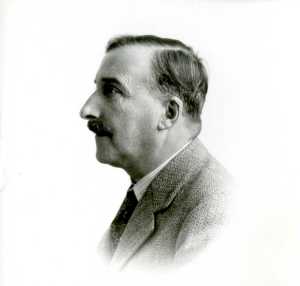
Stefan Zweig, ca. 1938, The Stefan Zweig Collection, Daniel A. Reed Library Archives & Special Collections, State University of New York at Fredonia
Fredonia’s Stefan Zweig Collection comprises one of the most extensive manuscript collections documenting the life and work of renowned Austrian author Stefan Zweig (1881-1942) in the world. Housed in the Archives & Special Collections of the Daniel A. Reed Library at the State University of New York at Fredonia, the collection includes letters, notebooks, book drafts, essays, lectures, photographs and clippings alongside published volumes, articles and ephemeral materials. Most significant is the correspondence – over 6,000 letters – received by Zweig during the years 1901-1942 from preeminent authors, composers, artists, filmmakers and scholars of the early 20th century, noteworthy among them Max Brod, Sergei Eisenstein, André Gide, Joseph Gregor, James Joyce, Luigi Pirandello, Erich Maria Remarque, Joseph Roth, Richard Strauss, Bruno Walter, Franz Werfel, Virginia Woolf and countless others.
The purpose of this blog is to encourage the scholarship and appreciation of Stefan Zweig by highlighting materials from the Zweig Collection at Fredonia, promoting other manuscript collections of Zweig materials around the world, and informing readers about Zweig-related conferences, symposia, exhibits and other events, both on the campus of Fredonia and at institutions worldwide.
This blog is written and maintained by Kim Taylor, Coordinator of Archives & Special Collections at the State University of New York at Fredonia, with editorial assistance and contributions from Dr. Birger Vanwesenbeeck, Associate Professor of English at Fredonia, and Gerda Morrissey, Emerita Curator of the Stefan Zweig Collection. Special thanks to Sara Parme, Digital Services Librarian at Fredonia.
Occasional guest posts may be solicited.
Please visit our website to find out more about the Zweig Collection.